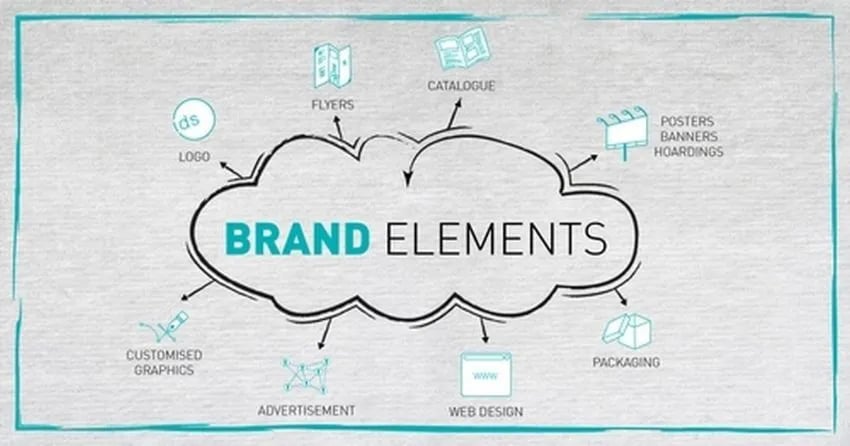
It’s important for your business to establish a strong brand identity to effectively engage customers and generate leads. This blog post will guide you through the definition of brand identity, its key elements, and provide examples that showcase its impact in the digital landscape. With insights from the Mister Nguyen Agency, you’ll learn how to utilize social media and design to enhance your brand identity and create a compelling website that resonates with your audience. Understanding these concepts will empower you to build a memorable brand that stands out in the marketplace.
Definition of Brand Identity

For your business, brand identity encompasses the unique combination of elements that distinguish your brand from others. It represents how your customers perceive your brand through visual design, messaging, and overall experience. A strong brand identity not only reinforces your values but also connects with your audience on an emotional level, making it easier for them to relate to you amidst a crowded marketplace.
Importance of Brand Identity
To effectively engage your customers and generate leads, a well-defined brand identity is crucial. It helps build trust, recognition, and loyalty, allowing your business to stand out in a competitive landscape. A compelling brand identity communicates your values and mission clearly, making it easier for customers to resonate with your message across various platforms, including your website and social media.
Key Components
At the heart of your brand identity are key components such as your logo, color palette, typography, and messaging. These elements work cohesively to create a visual and emotional representation of your business, ensuring consistency across all channels.
Consequently, these key components play an important role in your branding strategy. A well-designed logo serves as a visual anchor for your brand, while a carefully chosen color palette elicits specific emotions from your customers. Typography should reflect your business’s personality and values. Additionally, your messaging—whether it’s on social media or your website—should maintain a consistent tone that resonates with your target audience. By harmonizing these elements, you can design a brand identity that effectively attracts and engages your ideal customers, setting you up for long-term success.
Elements of Brand Identity

While crafting your brand identity, it’s crucial to understand the key elements that make it effective. These include visual identity, verbal identity, and brand personality, all of which work together to create a cohesive image of your business. By combining these elements strategically, you can better connect with your customers, enhance their experience, and generate more leads through various platforms like your website and social media. The right brand identity can set you apart in a competitive market.
Visual Identity
Along with establishing a strong brand identity, your visual elements play a significant role in communicating who you are. This includes your logo, color palette, typography, and overall design aesthetic across your website and social media. These visual cues help customers recognize your brand at a glance and foster a lasting impression, making it crucial to ensure they are aligned with your business values.
Verbal Identity
Verbal identity encompasses the tone and style of your communication, including your brand messaging, tagline, and vocabulary used in customer interactions. It’s vital to craft a message that resonates with your target audience, conveying your value in a relatable manner that captures your business essence and engages your customers effectively.
For instance, if you run a design brand like Mister Nguyen Agency, your verbal identity should reflect creativity and professionalism. Use language that speaks to your audience’s needs and aspirations, incorporating storytelling elements where appropriate. Consistency across all platforms, from your website to social media, strengthens your brand perception, making it easier for customers to identify with your business.
Brand Personality
Among the elements of brand identity, brand personality allows your business to connect with customers on an emotional level. By defining your brand’s character traits—such as being friendly, innovative, or reliable—you create a relatable image that resonates with your audience and influences their perception.
It helps to define how your brand communicates and interacts with customers, shaping their overall experience. If your tone is warm and approachable, for example, it can foster loyalty and trust, while a more formal tone might attract professional leads. Establishing a distinctive brand personality can set your business apart in today’s competitive landscape, making your interactions memorable and engaging across various channels, including social media and your website.
Examples of Strong Brand Identity
Keep exploring the world of strong brand identities to understand how successful businesses communicate their values and purpose. Brands like Apple and Nike demonstrate how a cohesive identity can shape customer perceptions and loyalty. Their unique designs, consistent messaging, and powerful storytelling reflect the core values, creating a deep connection with their audience. As you analyze these examples, consider how you can implement similar strategies to elevate your own brand identity in your website and social media presence.
Case Study: Successful Brands
Study powerhouse brands like Coca-Cola and Amazon, which have established robust identities that resonate with their target audiences. Through a combination of thoughtful design, consistent messaging, and engaging experiences, these brands not only attract customers but retain them effectively. This case study illustrates the significance of aligning your brand identity with your business values and the expectations of your audience.
Lessons Learned from Brand Strategies
Brand strategies teach invaluable lessons about effective identity development and customer connection. You can glean insights from the branding techniques employed by leading businesses to craft your own strong brand identity that resonates with customers.
Identity is the foundation upon which you build a strong connection with your customers. By studying the strategies employed by successful brands, you can learn to create a unique voice, visual presence, and engaging narrative that speaks to your audience’s values. This consistency in branding not only fosters loyalty but also turns leads into long-lasting customers, enhancing your overall business growth and success. Consider how Mister Nguyen Agency can guide you in refining your brand identity through expert design and social media strategies tailored specifically for your business.
Developing a Brand Identity

All businesses must develop a brand identity that resonates with their customers and stands out in a competitive landscape. This involves understanding The Key Elements of Brand Identity which contribute to how your audience perceives your brand. Through strategic planning, you can create a cohesive and consistent identity that aligns with your business values and connects emotionally with your target market.
Research and Analysis
The foundation of any successful brand identity lies in comprehensive research and analysis. You need to research into your target market’s preferences, behaviors, and trends to tailor your brand elements accordingly. Identifying your competitors’ strengths and weaknesses can also provide valuable insights to differentiate your brand, making it more appealing to potential customers.
Designing Brand Elements
Against a backdrop of increasing competition, effective brand identity relies heavily on well-designed brand elements. These include your logo, color scheme, typography, and overall aesthetic, all tailored to evoke specific emotions in your audience. A strong visual presence across your website and social media will enhance recognition and attract leads, ultimately driving business growth.
In addition, the design of brand elements should reflect your unique value proposition and connect with your target audience. Collaborating with professional agencies, like Mister Nguyen Agency, can help ensure your brand elements are not only visually appealing but also strategically aligned with your business goals. By creating a cohesive look and feel across all platforms, you can establish trust and credibility, making it easier for customers to engage with your brand.
Challenges in Maintaining Brand Identity
Many businesses encounter obstacles in preserving their brand identity amidst changing landscapes. As your brand interacts with customers across various platforms—from your website to social media—consistency can become difficult to maintain. It’s vital to stay aligned with your core values while adapting to emerging trends and expectations from your audience to avoid brand dilution and confusion.
Evolving Market Trends
An ever-shifting market makes it challenging for you to stay authentic while appealing to your customers. Trends can arise rapidly, and your business may feel pressured to adapt quickly. Balancing the need for innovation with the essence of your brand identity can be daunting but is necessary for long-term success.
Brand Consistency
Brand consistency remains vital for establishing trust and recognition among your leads and customers. It ensures that every interaction with your business—whether through your website, advertising, or social media—aligns with your established brand identity. Maintaining a unified visual and messaging strategy will reinforce your brand’s credibility and help you build a loyal customer base.
Even subtle deviations in your branded communications can confuse your audience, making them question your credibility. Your design elements, tone, and messaging should consistently reflect the values of Mister Nguyen Agency across all platforms. This includes ensuring that visual branding on your website aligns seamlessly with your social media presence. A well-maintained brand consistency not only aids in recognition but also enhances your overall business reputation, ultimately leading to stronger connections with your customers and increased engagement with your leads.
Future of Brand Identity

Your brand identity will continue to evolve as new technologies and consumer behaviors emerge. It’s vital to stay informed about these changes to maintain relevance and connection with your audience. For insights on What Are Brand Identity Elements?, explore the core components that will shape your future branding strategies.
Digital Transformation
Digital advancements are reshaping how you interact with your customers and manage your brand identity. With increased online presence, your website, social media, and other digital platforms are vital for establishing a cohesive brand image. This transformation compels businesses like Mister Nguyen Agency to adopt innovative design strategies that resonate with audiences.
Consumer Expectations
To remain competitive, you must align your brand identity with evolving consumer expectations. Customers today seek authenticity, transparency, and meaningful connections with the brands they support.
Due to the rapid changes in market dynamics, consumers are more informed and expect brands to deliver consistent experiences across various touchpoints. Your business must engage through social media, maintain a compelling website, and design a brand that reflects its values. Prioritizing these factors will help you attract leads and foster long-term customer loyalty. Balancing innovation with a deep understanding of your audience will set your brand identity apart in the digital landscape.
Summing up
The elements of brand identity, including your logo, color scheme, and messaging, play a significant role in how your business is perceived by customers. By effectively designing your brand, you can create a strong presence on your website and social media, ultimately attracting more leads. Mister Nguyen Agency offers insights and examples to help you craft a compelling brand identity tailored to your audience, setting you apart from competitors. Focus on aligning your brand across all channels to reinforce recognition and loyalty among your customers.











